
Dhole
Dhole
Dhole
Do you know a wild canine called a dhole, which has reddish-brown fur and is about the size of a medium-sized dog? Since they are bred only in a few zoos, many people may have heard the name for the first time. Dholes are also animals that are worried that they will become extinct, even though there are still many things we don't know. Let's take a look at what features and secrets dholes have in this article!
Dhole Basic Infomation

Mammalia-Carnivora-Canidae-Dhole genus.
Length:80~110cm. Weight:14~21kg.
The characteristics of dhole are that their entire body is covered with reddish-brown hair, and the lower part of their body is light yellow. Their tails are black, which is also a characteristic feature.
Wild dholes live in groups called “packs” consisting of several to about 10 individuals, sometimes up to 20-40 individuals. There are more males than females in the pack, and it is thought that only the highest-ranking male and female in the pack breed.
Dholes reach sexual maturity at about 11-12 months of age and can reproduce. The gestation period is about 60-63 days, and they give birth to 4-6 offspring at a time. Newborns are dark in color and begin to eat meat at about 2 months old. They start participating in hunting around 7 months old.
Dholes are very social animals and pack members cooperate to hunt and raise their young.
When there are young in the pack and they go hunting, the mother of the young and several members stay at the den to protect the young while the rest of the members go hunting. When the hunting members return to the den, they regurgitate the meat they ate and give it to their young.
Dhole Q&A

Where does the dhole get its name?
The name dhole is thought to be derived from the ancient Asian word meaning "reckless" or "bold".
It goes by various other names, such as "red dog" and "indian wild dog". The scientific name is expressed as "cuon alpinus", which means "alpine dog".
※Cuon means "dog" and alpinus means "alpine"
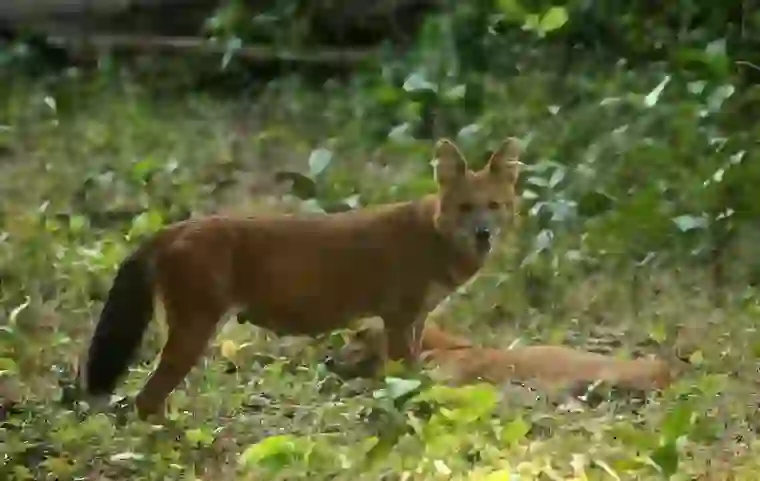
Why do dholes live there?
Dholes are found in a wide range of Asia, including India, Afghanistan, and Russia. They often rest in the bushes or shade during the day and become active when the surroundings are dimly lit in the early morning or evening.
Dholes are an old type of canid and were once thought to have lived in a very wide range of areas, including Europe, North America, and Asia. However, it is believed that populations that lived in Europe became extinct around the late Pleistocene period and only remained in their current habitat.
Dholes are classified as a separate genus called “dhole genus,” although they resemble wolves, african wild dogs, and coyotes.Currently, only one species of animal is classified as the “dhole genus” in the canidae family.
Depending on their habitat and characteristics, they are divided into up to 11 subspecies. However, there are concerns that the classification method may be problematic.
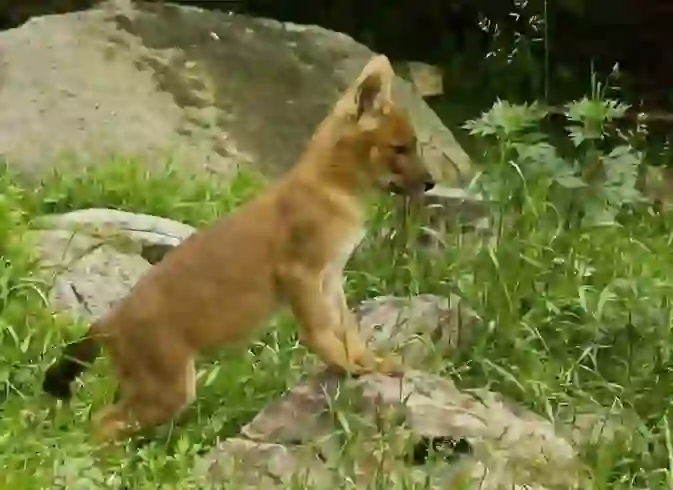
What are dholes eating?
Dholes are carnivorous animals that mainly prey on herbivores such as wild boars, deer, and water buffalo.
They tend to eat deer such as Axis deer and Samba deer, but also eat rabbits, mice, small reptiles, and insects.
Since large carnivores such as tigers and leopards often inhabit the habitat of dholes, there are sometimes conflicts between carnivores over prey. Since dholes are small in size, they cannot win against tigers or leopards. Therefore, they quickly eat their prey before it is taken away.
However, when Dholes are in large groups, they sometimes confront tigers and leopards and drive them away.
By the way, it seems that zoos sometimes feed them dog food in addition to meat such as horse meat, chicken meat, liver, and horse bones.
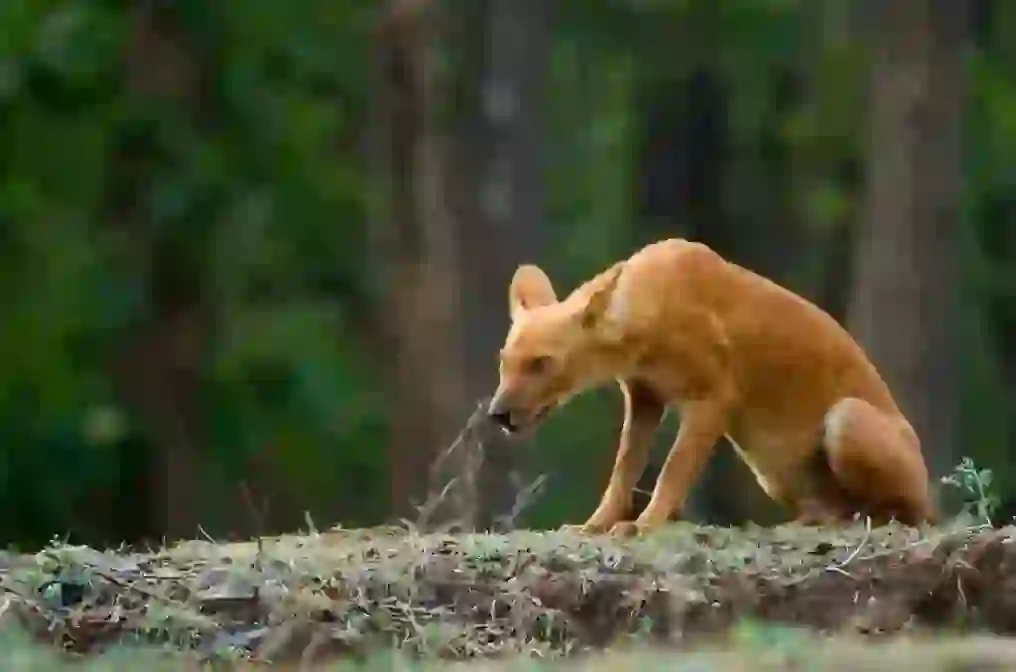
Is it true that hunting dholes is cruel?
Although the way dholes hunt may seem cruel to some people, it is said to have a high success rate compared to other animals because it utilizes teamwork and each member cooperates to efficiently perform their role.
It is clear that their hunting skills are excellent because they can catch large prey such as water buffalo that are more than 10 times their own weight.
Dholes use a method of stopping the movement of prey by several individuals and then biting the prey’s stomach or buttocks to drag out its internal organs and cause it to die of shock. Since the prey whose internal organs have been dragged out dies immediately, it is believed that the time of suffering is short.
However, some people say that it is cruel and dirty to start eating the internal organs that have been dragged out even if the animal that has become prey is still alive or to surround the prey in a group and eat it greedily.
By the way, when dholes eat, they do not fight with each other and share the prey equally among the members of the group.
Since dholes can store food, they can eat as much as 4-5 kg of meat per animal per meal. Once they are full, they can spend about two days without hunting.
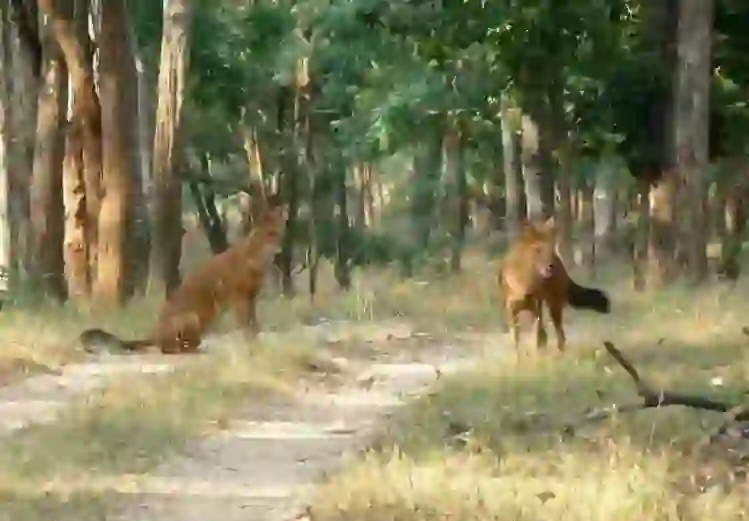
Is it true that dhole squeal in various voices?
It's true.
When dholes communicate with each other, they are known to make various sounds.
Like other canids, dholes sometimes make sounds such as “kun” and “kunkun”, but they are also called the “whistling Hunter” because they make whistling sounds like “hoho” and “chiruchiru”.
By the way, it is known that dholes have 8-11 types of vocalizations and use them depending on the situation. However, it is still unclear what each vocalization means.
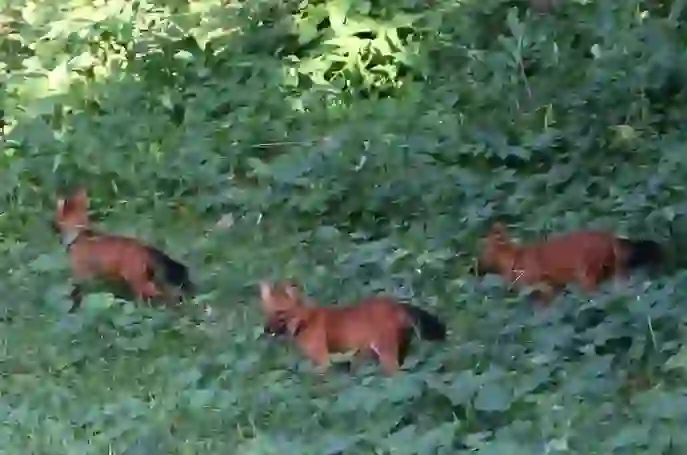
What is the difference between a dhole and a wolf?
By the way, what is the difference between the same canid-born carnivore, the dhole and the wolf?
First of all, dholes and wolves have completely different body sizes. The body length of dholes is about 80-110cm and their weight is about 14-21kg, which is about the size of a medium-sized dog.
On the other hand, the body length of wolves is about 82-160cm and their weight is about 18-80kg, which is many times larger than that of dholes.
In addition, dholes and Wolves have different numbers of teeth and nipples. dholes have 40 teeth and wolves have 42 teeth. dholes have 7-8 pairs of nipples (usually only 5 pairs develop), while wolves have 4-5 pairs.
Although dholes and wolves look similar, these differences in body structure show that they are different animals.
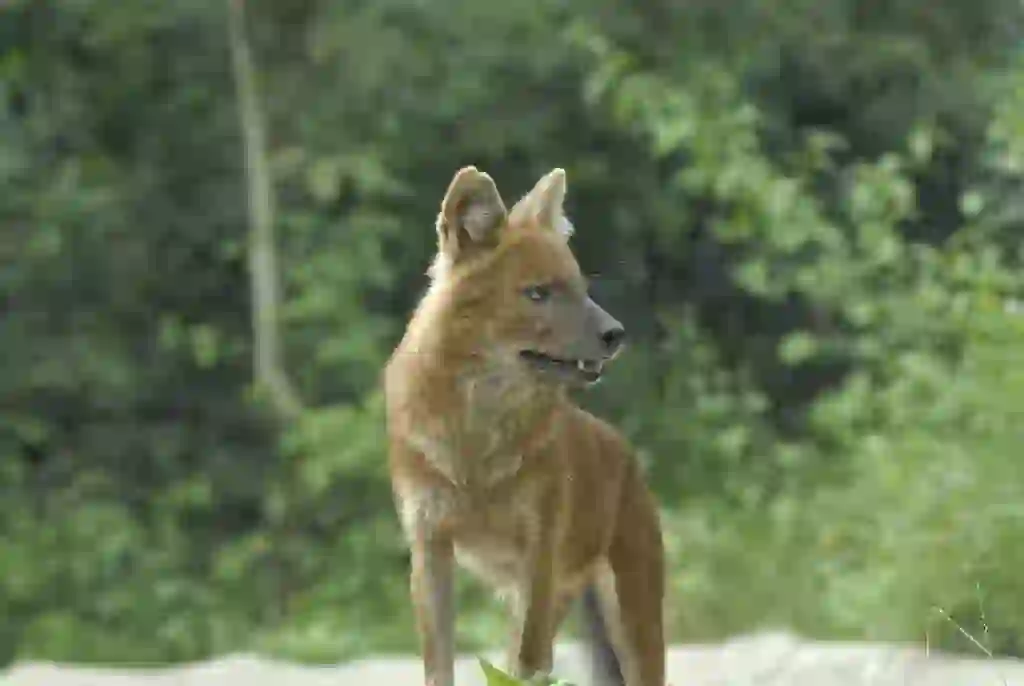
Can dhole be kept as pets?
When breeding rare animals at home, it is necessary to follow the established laws in some countries. This time, we will introduce whether dholes can be bred at home in Japan.
Dholes are designated as “specified animals” under Japanese law because they have the potential to endanger human life or property.
Since June 1, 2020, it has been completely prohibited to keep new specified animals as pets in Japan for the purpose of keeping them as pets, so it is not possible to keep dholes as pets in Japan.
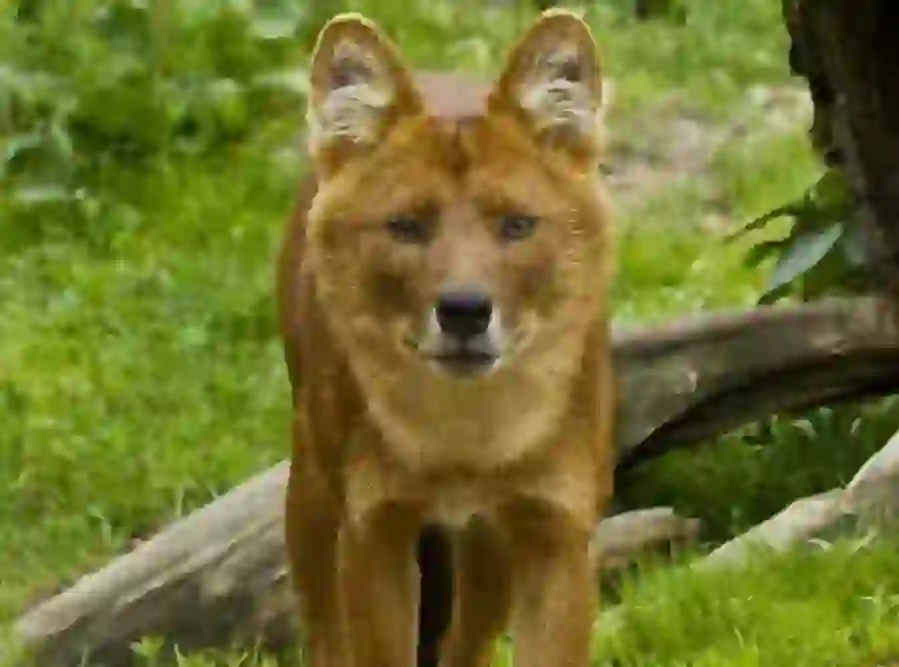
Is there a place to see dholes in Japan?
Dholes are valuable animals that are endangered, but they are kept and exhibited at the Yokohama Zoo Zoorasia in Kanagawa Prefecture in Japan.
Until 2016, they were also kept at the Ueno Zoo in Tokyo, but it became difficult to continue keeping them due to problems with the space for keeping them, and they are no longer kept there. It seems that they were also kept at the Tennoji Zoo in Osaka Prefecture until 2018.
Wild animals of the canidae family often have a wide range of behavior and tend to live in groups. Therefore, it seems that it is difficult to keep them in zoos where there is inevitably limited space compared to other animals.
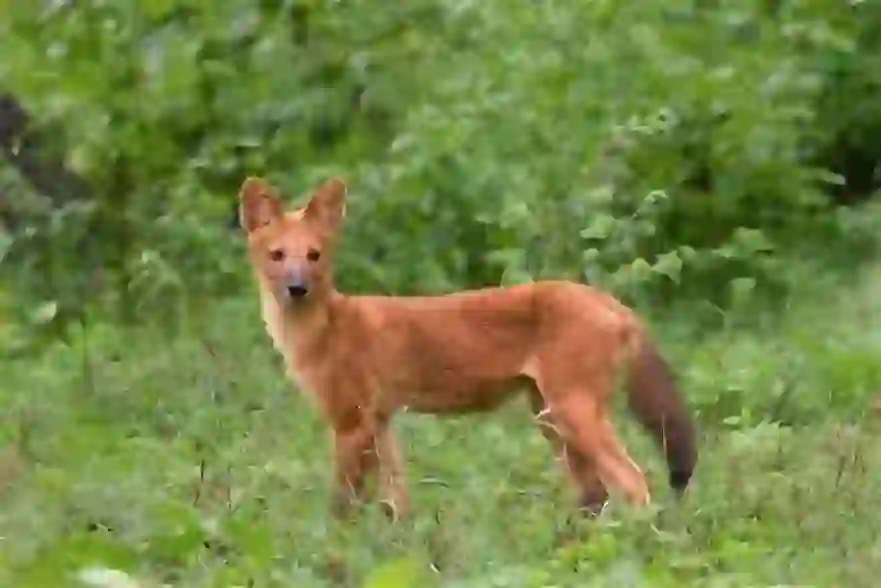
What is the lifespan of a dhole?
The lifespan of a dhole is about 10 years in the wild and 15-16 years in captivity.
However, in the case of wild dholes, they cannot go to the hospital even if they are injured or infected with a disease. Furthermore, since they are often eaten by natural enemies when they are young, it is thought that many individuals cannot live for 10 years.
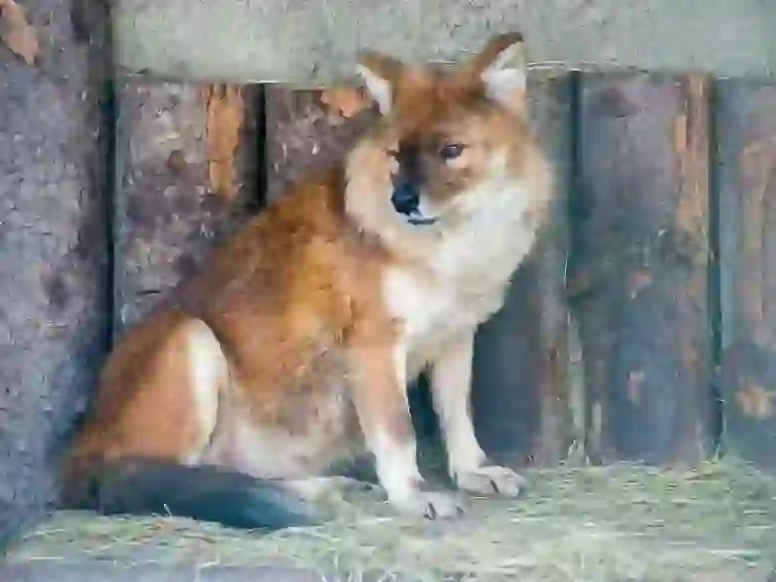
What enemies do dhole have?
The natural enemies of dholes in the wild are considered to be large carnivores, such as leopards and tigers.
However, the biggest enemy of dholes is actually us humans.
Dholes have been treated as harmful animals because they attack livestock, their numbers are too large, they kill too many deer, and they are creepy, and have been massacred in large numbers using poison, guns and traps since ancient times.
Dhole has suffered a significant reduction in population due to various reasons such as habitat loss caused by development, decrease in prey animals, and infectious diseases specific to canids such as rabies and distemper that have killed domestic dogs.
Dhole is classified as “Endangered (EN)” on the International Union for Conservation of Nature (IUCN) Red List as it is at high risk of extinction in the wild in the near future. It is also classified as “Appendix II” under the Washington Convention, which means that although there is no immediate danger of extinction, trade must be regulated to prevent extinction.
However, it is believed that there are only about 2,000 dholes left in the wild, and it is said to be particularly at risk of extinction among canids.
If this continues, dhole may become extinct before its ecology and classification are clarified and become a phantom animal that can only be seen in picture books and videos.

Would you like to become a part of the 'Animalbook.jp'?
Turn your knowledge into Q&A and share it with the world. ※Publication will be activated after purchase. Let's share information together!
Dhole Type of List

- Dhole
Information
Congratulations! You are the first commenter!

Create Your Favorite List!
Dhole
Save the animals you love! Build your own list to quickly revisit your favorites later.

Would you like to leave a comment?
※Please note: This is for the purchase of rights to post comments within the article.
Find Your Favorites!
Our shop offers a unique and attractive selection of goods themed around various animals.
Dhole References

- 今泉 忠明(2007年)『野生イヌの百科』データハウス
- よこはま動物園ズーラシア「ドール」 http://www.hama-midorinokyokai.or.jp/zoo/zoorasia/animal/highlands/Dhole/
- よこはま動物園ズーラシア「飼育日誌 Newアイドール☆ドール」 http://www.hama-midorinokyokai.or.jp/zoo/zoorasia/details/new.php
- 東京ズーネット「どうぶつ図鑑 ドール」 https://www.tokyo-zoo.net/encyclopedia/species_detail?code=60
- Mystery of Whistling Hunters, the Dhole or Indian Wild Dog!「【ドールの学名とその意味】」 https://kuri3.jimdofree.com/日本語/ドールとは/名前とその意味/
- dholes.org「WHAT MAKES A DHOLE」 http://www.dholes.org/what-makes-a-dhole.html
- 京都大学野生動物研究センター「口笛ハンター、ドールの会話」 https://www.wrc.kyoto-u.ac.jp/booklet/dhole.html
- Yahoo Japan「イヌ科の希少動物”ドール”の狩り【ナショジオ】」 https://video.yahoo.co.jp/c/3888/9204a8671b8c60c42608832511a492ba69ede8c3
Dhole Introduction of media used

出典:https://commons.wikimedia.org/wiki/File:Dhole_Kanha2.jpg
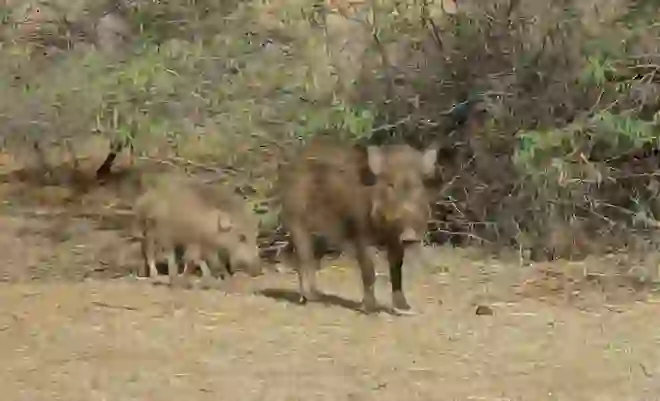
food
出典:https://pixabay.com/images/id-4917828/

food
出典:https://pixabay.com/images/id-4770893/

https://commons.wikimedia.org/wiki/File:Dhole_(9309626648).jpg

出典:https://commons.wikimedia.org/wiki/File:Cuon_alpinus_alpinus.jpeg
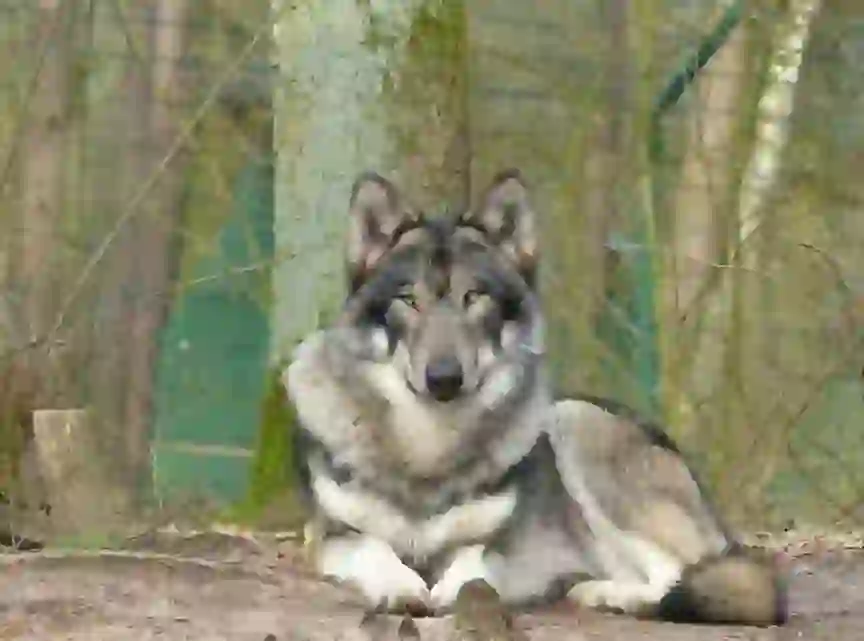
similar
出典:https://pixabay.com/images/id-1226698/
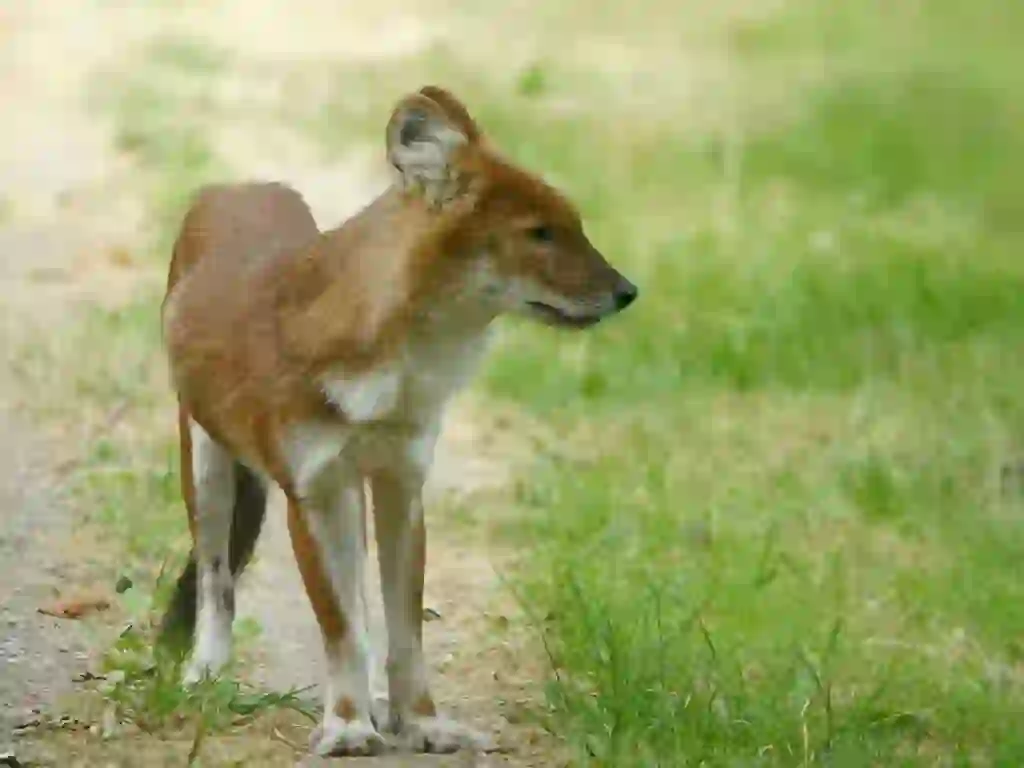
出典:https://commons.wikimedia.org/wiki/File:Cuon_alpinus.jpg
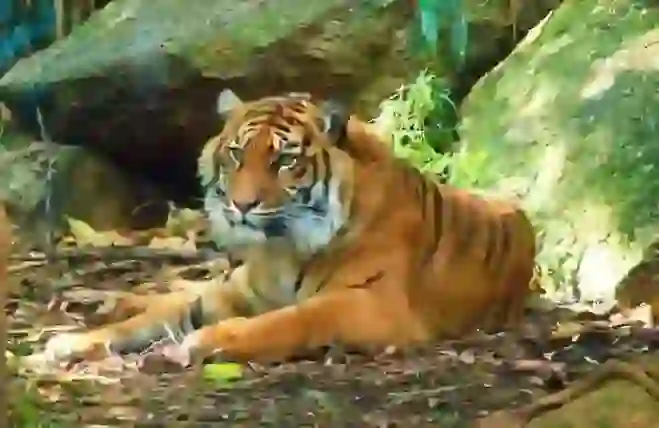
enemy
出典:https://pixabay.com/images/id-169905/
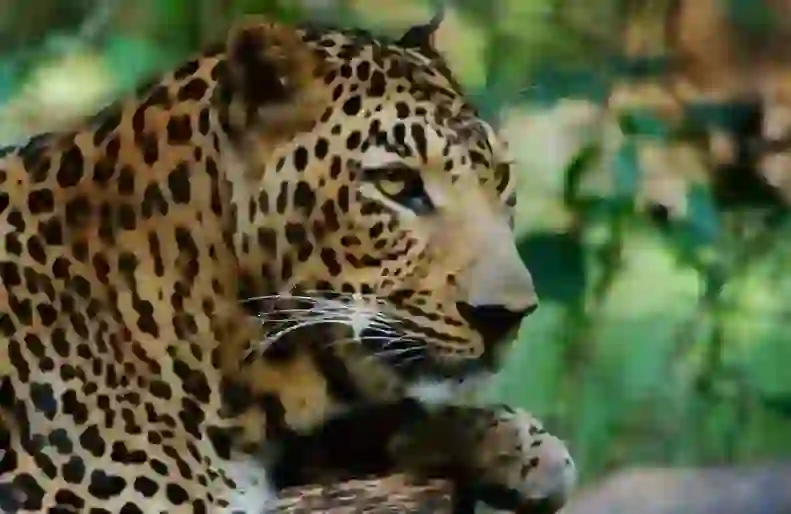
enemy
出典:https://pixabay.com/images/id-3837281/
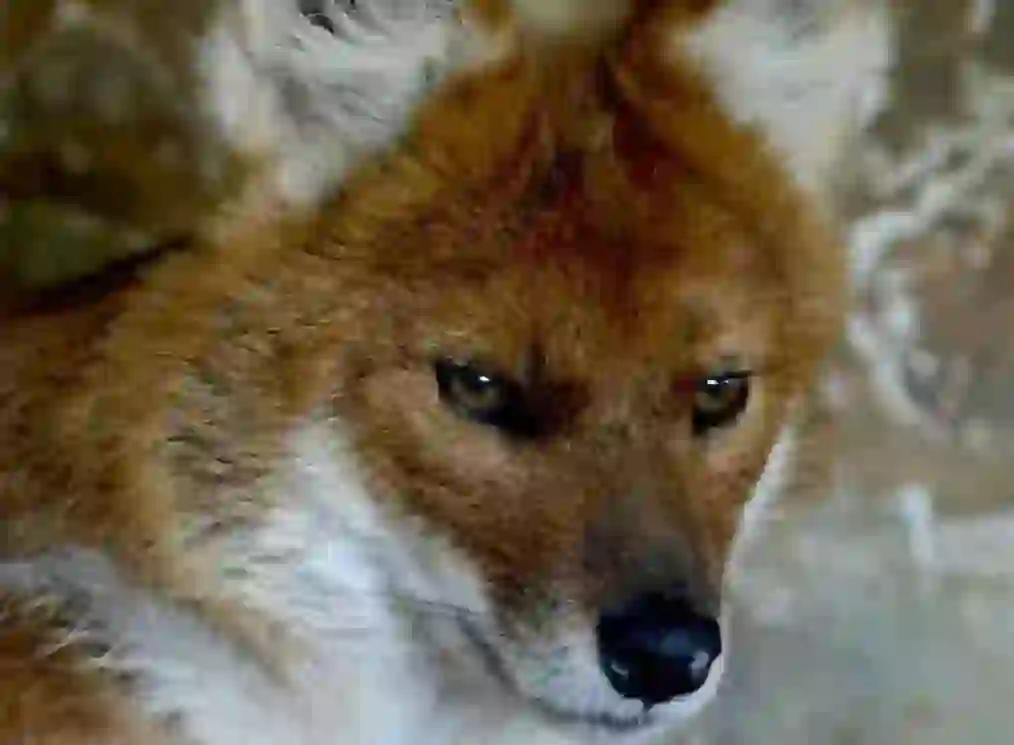
出典:https://commons.wikimedia.org/wiki/File:Dhole.jpg

Help Enrich Our Animalbook.jp with Your Media!
We are constantly looking to expand and enrich our Animalbook.jp with amazing photos and videos of animals. If you have any media that you'd like to share, please contribute and help us showcase the beauty and diversity of the animal kingdom. Your submissions will be credited and featured in our encyclopedia, reaching a wide audience of animal lovers.


















